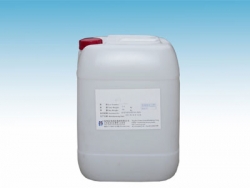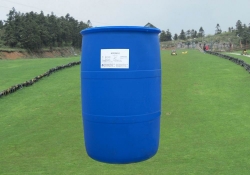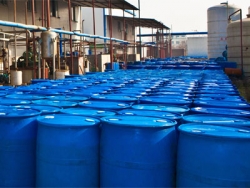Surface chemical modification is to finish surface modification by local coating on the surface of inorganic particles by chemical reaction or chemical adsorption between surfactants and inorganic particles.

Liu Qian and other surfactants used polyethylene glycol to treat SiC ultrafine particles. Polyethylene glycol molecular chains were modified on the surface of SiC particles, which acted as a steric barrier to prevent the reunion of solid SiC particles. Surfactant-treated SiC powders with irregular shape or agglomeration can adsorb long molecular chains of surfactants on surface defects and suspended bonds of particles, accelerate the disintegration of large particles or agglomerated particles, and improve the dispersion of SiC particles.

Zhou Jigao used adipic acid and stearic acid to modify the surface of nano-zirconia powder. The results showed that the esterification reaction of adipic acid and carboxyl (-COOH) in stearic acid with hydroxyl (-OH) on the surface of nano-zirconia particles was similar to that of acid and alcohol, and a single molecular film was formed on the surface of nano-zirconia powder. The surface-modified nano-zirconia powder changed from polarity to non-polarity. At the same time, the interaction force (including intermolecular force and mechanical hinge force) between the powders is reduced by adsorbing the monolayer on the surface of the powders, which reduces the friction resistance of the powders when they flow, thus improving the fluidity of the powders.

The commonly used surfactants are coupling agents, higher fatty acids and their salts, unsaturated organic acids and organic silicon, etc. Coupling agents are commonly used mineral surfactants.
Crystal agglomeration refers to the phenomenon that crystals change from loose state to agglomeration. The agglomeration makes the fluidity of crystal particles worse, which directly affects the performance of the product. Adding trace surfactants to the solution during product crystallization can effectively prevent product caking.
Its mechanism is as follows: 1) Surfactant enters the crystallization system and forms a wrapping film on the surface of crystals, which results in mechanical isolation between crystals; 2) Hydrophobic layer is formed on the surface of crystals, which prevents the water exchange between crystals and atmosphere; 3) Reducing the surface tension of solution, changing the interface contact angle between solid and liquid, which reduces the capillary adsorption force of crystals to solution; 4) Participating in the production process of crystals and improving it. The crystal morphology can be changed by changing the relative growth rate of each crystal plane, improving the crystallization habit of particles and reducing the interfacial energy of crystals. For example, alkyl sulfonate and its intermediate alkyl sulfonyl chloride, alkyl benzene sulfonate, sodium p-toluene sulfonate, sodium fatty acid, etc. can be used as anti-caking agents for crystal products.